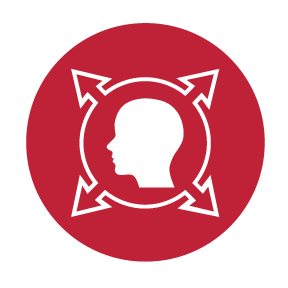- Georgian Heights Elementary School
- Homepage
Teacher Duo Collaborates to Help Students Improve Early Literacy and Mathematics
February 14, 2024 – Kindergarten students at Lindbergh Elementary School are lucky enough to have not one but two teachers. Kindergarten educators Lauren Farley and Pat Hughes may have their classes, but they view the students as a shared responsibility.
Farley and Hughes have identified knowing letters and their sounds as something they want all of Lindbergh’s kindergarten students to understand before entering first grade. The two are working together on their curriculum to meet this goal.
“We do shared lesson planning, so we teach the same thing,” Hughes said. “We work so closely that we know the kids are going to get taught. Yes, these are my students, but they’re also our students.”
During a professional development seminar last year, Farley and Hughes first learned about this co-teaching model. The session focused on the benefits of collaborative teaching, and the two were excited to put what they learned into practice for the 2023-2024 school year.
Their work is data-driven. After lessons, Farley and Hughes meet to review what skills their group is doing well and what skills still need work. They divide students between their two classrooms not based on their primary teacher but on where their understanding of the subject material is.
By analyzing worksheets from the day’s lesson, Farley and Hughes identify which students need to work on which skills. For literacy, students could be proficient at understanding which letters make which sounds, but they might need help to blend the letters to form a word. On the other hand, some students may do well at blending words together but need help pronouncing individual letters.
Farley and Hughes look at what each student needs to practice. They then divide students by the skills they need additional work with, and each group goes to the classroom where they will work on that skill. By structuring their lessons this way, students can focus on skills they need additional practice with, not those they’ve already mastered.
This teaching style allows the two to give students an individualized education plan that maximizes what they already understand and fills in the gaps where they need work. Students still all learn the same material but can learn it in a way that suits them best.
“We still teach all the students everything, but with this, we are able to focus on individual kids,” Hughes said. “We’re focusing on one kid, one group of kids, and the whole class all at the same time.”
Looking at the first half of the school year utilizing this method versus the first half of the 2022-2023 school year without, Farley said she and Hughes are seeing a massive improvement. When they look at the time frame for mastering essential standards, she said their students are ahead of those in years past.
“It’s been a huge change,” she said. “Our first essential standard was to have students learn all letter names and sounds. I think we have just a handful of kids who haven't quite mastered it yet. Last year, I had a lot more students that took longer to [meet this standard.]”
Hughes and Farley both credit the co-teaching strategy for improving student outcomes. By comparing student data and planning with each kindergarten student in mind, they help students grasp concepts quicker and prepare them for first grade. Right now, these efforts focus strongly on literacy with some additional math instruction, but they’re looking to extend this teaching model to other subjects in the future.
“[We want to] try and keep flooding it into as many subjects as possible,” Farley said. “We’ve seen success with it. We want to keep doing it with as many subjects as we can.”







